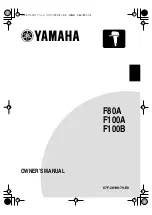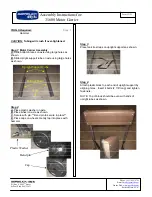
USERS GUIDE
KAS-33100-0004 “MUSKIE” MICROPHONE
EVALUATION KIT
knowles.com | KAS-33100-0004 Muskie Microphone Evaluation Kit
©2019, Knowles Electronics, LLC, Itasca, IL, USA, All Rights Reserved.
SiSonic, Knowles and the logo are trademarks of Knowles Electronics, LLC.
Figure 1: KC10143 Muskie Assembly
KIT DESCRIPTION
The KAS-33100-0004 Muskie microphone evaluation kit allows for
simple and easy evaluation of Knowles SiSonic™ MEMS microphones.
•
Evaluate two input channels of audio from multiple MEMS
microphone types.
•
Microphone types include single and differential Analog
MEMS microphones, Digital PDM MEMS microphones, and
Digital I2S MEMS microphones.
•
Wide dynamic range (varies with microphone types and
audio path).
•
Selectable Clock Frequencies, Voltages, and Gains.
•
Multiple Audio Outputs – XLR, 3.5mm Headset Jack, USB
Audio.
SIMPLE QUICK START
1.
Place suitable microphone assembly correctly into socket.
2.
Select audio path and audio signal level.
3.
Select Mic voltage and digital clock (if applicable).
4.
Connect desired output (XLR, Headset, or USB).
5.
Connect USB Cable and turn Power On.
KIT CONTENTS
•
KC10143-xxx Muskie Evaluation Board (Note: xxx denotes
assembly revision number)
•
USB A to USB Micro cable power cable
•
KCA2733 Flex Adapter Assembly (3 Total)
Note: The evaluation kit requires assembled MEMS
microphones. Usable assemblies include microphones
mounted to “flex” circuit cards or coupon boards. The kit
does NOT include assembled Knowles MEMS microphones.
Microphone assemblies are available separately from a
Knowles distributer.
Figure 2: Mic on Flex Assembly Example
For additional Muskie evaluation kit information, electrical
documentation, or flex circuit assembly information visit the Knowles
website.
https://www.knowles.com/subdepartment/evaluation-kits/dpt-
microphones/subdpt-sisonic-surface-mount-mems
.
The Muskie evaluation kit is for the evaluation of the Knowles
Electronics’ line of MEMS microphones. In some instances the eval kit
may limit overall microphone performance.
THE KITS’ INTENDED USE IS TO SUPPORT R&D
ACTIVITIES, AND IS
NOT
INTENDED FOR QUALIFICATION
OR PRODUCTION TEST USE.





























